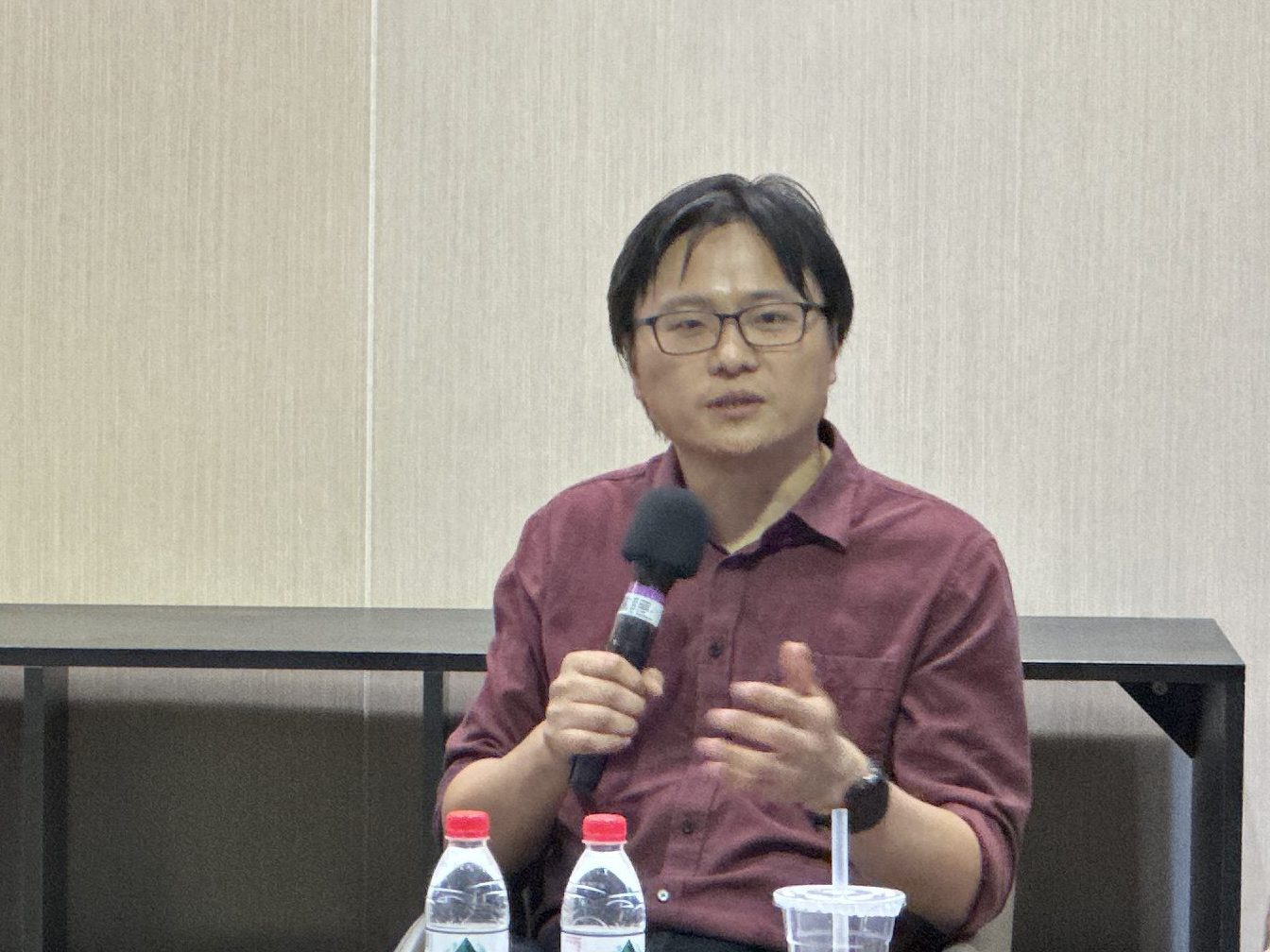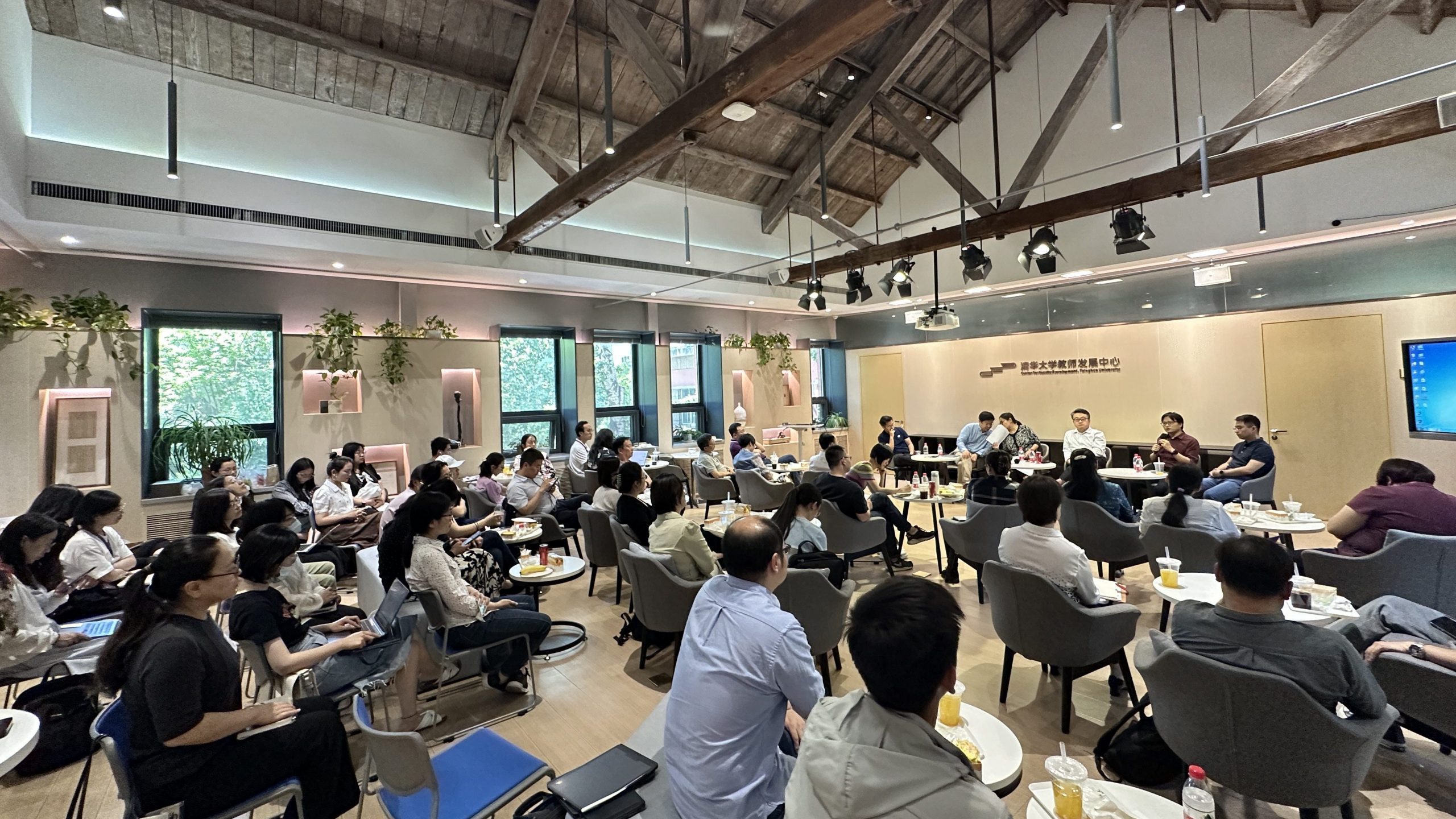On June 2, Tsinghua University Center for Faculty Development hosted an exciting panel discussion on “The New Age of AI and Education — A Study into the Teaching Enhancements Made Possible by GPT-Like AI Technologies” with scholars and practitioners across the university, moderated by Wang Xiaoxiao, Director of the Tsinghua University Online Education Center and the Secretary-General of the Global MOOC and Online Education Alliance. The in-person event registration reached maximum capacity within hours of release and was attended by more than 50 faculty members from various schools and departments. During the event, they discussed the opportunities and challenges presented by the new type of AI in higher education and reflected on the practical paths and development direction of the industry. This series of articles aims to present the key points made by the guest speakers and additional contributions from Enoch Wong, host of the ongoing Online Education Dialogue 2023: “Navigating AI-Driven Digital Transformation in Higher Education.”

Xu Luping, Deputy Dean of Tsinghua University Xingjian College and Associate Professor at the Center for Nano and Micro Mechanics (CNMM) in Tsinghua University’s School of Aerospace Engineering, shared valuable insights on the impact of AI on education during the panel discussion. This essay will provide an overview of Xu’s main arguments, as well as the author’s analysis, in the ever-changing landscape of AI that is revolutionizing higher education and presenting new possibilities, challenges, and paradigms.
Teachers, Learners, and AI: A New Learning Ecosystem
The traditional binary interaction system in education – the teacher and student – is undergoing a significant shift with the introduction of AI. Xu identifies this change, noting that education is evolving into a ternary interaction system: “teacher-student-AI.” The collaboration between teachers, learners, and AI forms a new learning ecosystem. In this structure, AI becomes an essential tool for both teachers and learners. As Xu suggested, learners can use AI to transcend local resource limitations, while teachers can use it as a tool for personalized instruction. Therefore, educators need to understand that the integration of AI not only provides students with a real-time discussion partner and seamless access to global knowledge networks, but also assists instructors in making their teaching more effective.
Nevertheless, in this ecosystem, teachers maintain a vital role. As digital immigrants teaching digital natives, educators hold a unique position. They possess the depth of understanding and experience that AI does not have. They also carry the responsibility of guiding students through this technological landscape, ensuring that learners can make the best use of these digital tools.
The transition from a binary to a ternary system is far from merely adding a third “participant”. It represents a fundamental change in the educational dynamics, promising a higher degree of personalization and democratization in learning. However, with every leap forward, there are challenges to address. We must ask: How can we ensure that the teacher’s irreplaceable role in the classroom is not undermined by the introduction of AI? How can we guarantee the right balance between AI-driven and human-guided learning?
Fostering Innovation in the Age of AI
One of the primary areas where AI’s potential is being recognized is in fostering innovation. With AI outperforming humans in relatively repetitive and mechanical tasks, higher education must shift focus towards nurturing innovative talents. Xu believes that AI-human collaboration can facilitate the scalable cultivation of these talents, which could solve to the ‘scalability versus personalization’ paradox in education. Each learner can be empowered to have personalized learning experiences, standing on the shoulders of global giants, and mobilizing global resources. The possibilities of AI-assisted “one-person-one-plan” models in higher education are genuinely groundbreaking.
However, the notion of utilizing AI to foster innovation also prompts us to reconsider the nature and purpose of education. As Xu rightly noted, the ability to find, define, and redefine problems is a crucial part of innovative thinking. Yet, these are highly individualized and personalized skills. How, then, can AI technology, which by its very nature operates based on patterns and established structures, cultivate such abilities?
Moreover, the idea of AI facilitating innovation also raises questions about what we understand as innovation in this digital age. AI, by its nature, learns from existing data patterns, suggesting a form of continuity. But isn’t innovation fundamentally about disruption and breaking away from existing patterns? This tension between continuity and disruption presents an interesting conundrum. Therefore, as we integrate AI into education, it will be crucial to explore how we can maintain this creative tension. This may involve developing new models of AI or rethinking how we use AI in education, where the objective isn’t just to feed students with information, but to spur them to think beyond existing boundaries and to question established norms.

In conclusion, the AI-driven transformation of higher education calls for a rethinking of pedagogical methods, learning goals, and teacher roles. As per Xu’s insightful reflections, the future will see a more intertwined relationship between AI, teachers, and students in an enriched learning ecosystem. As we navigate this transformative phase, it is crucial to harness the power of AI while preserving the irreplaceable human elements in the learning process. The journey promises to be challenging but equally exciting and rewarding.
